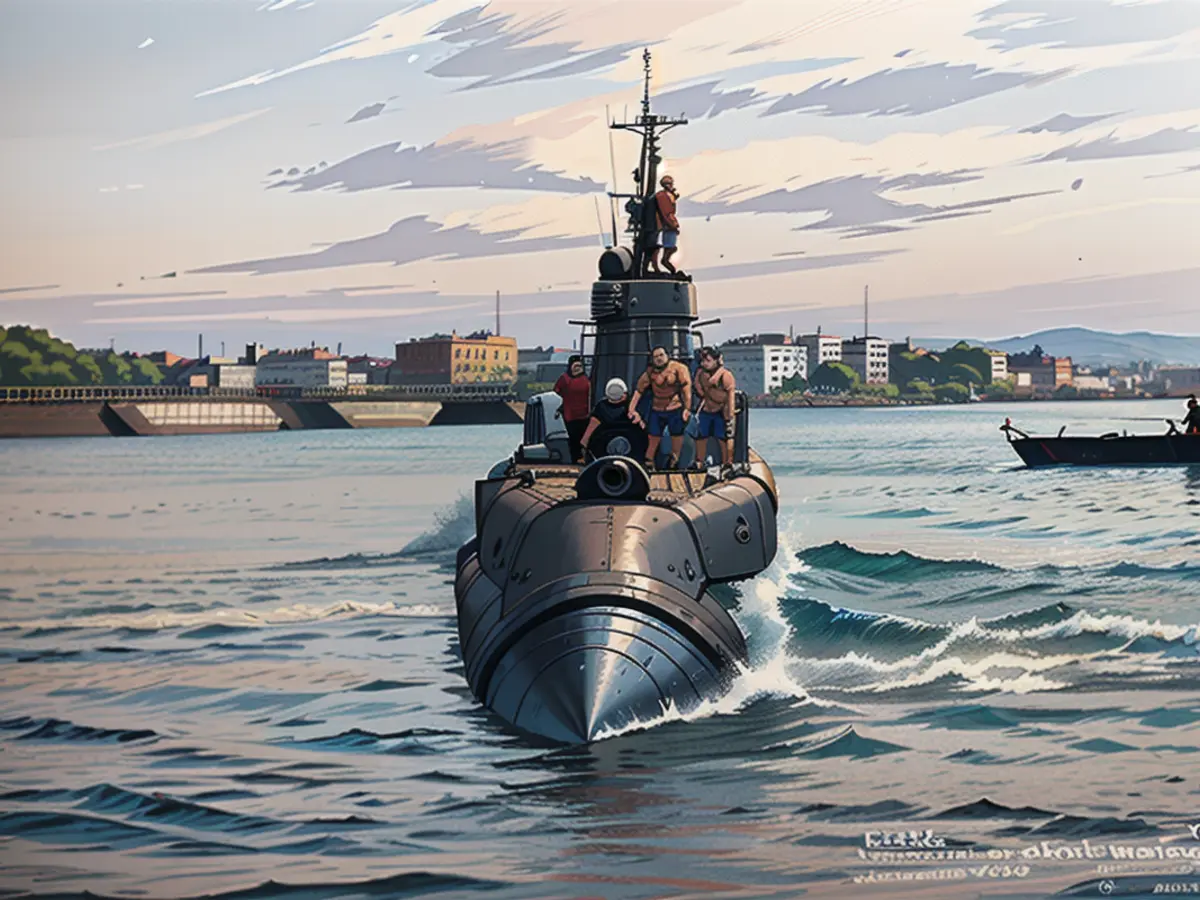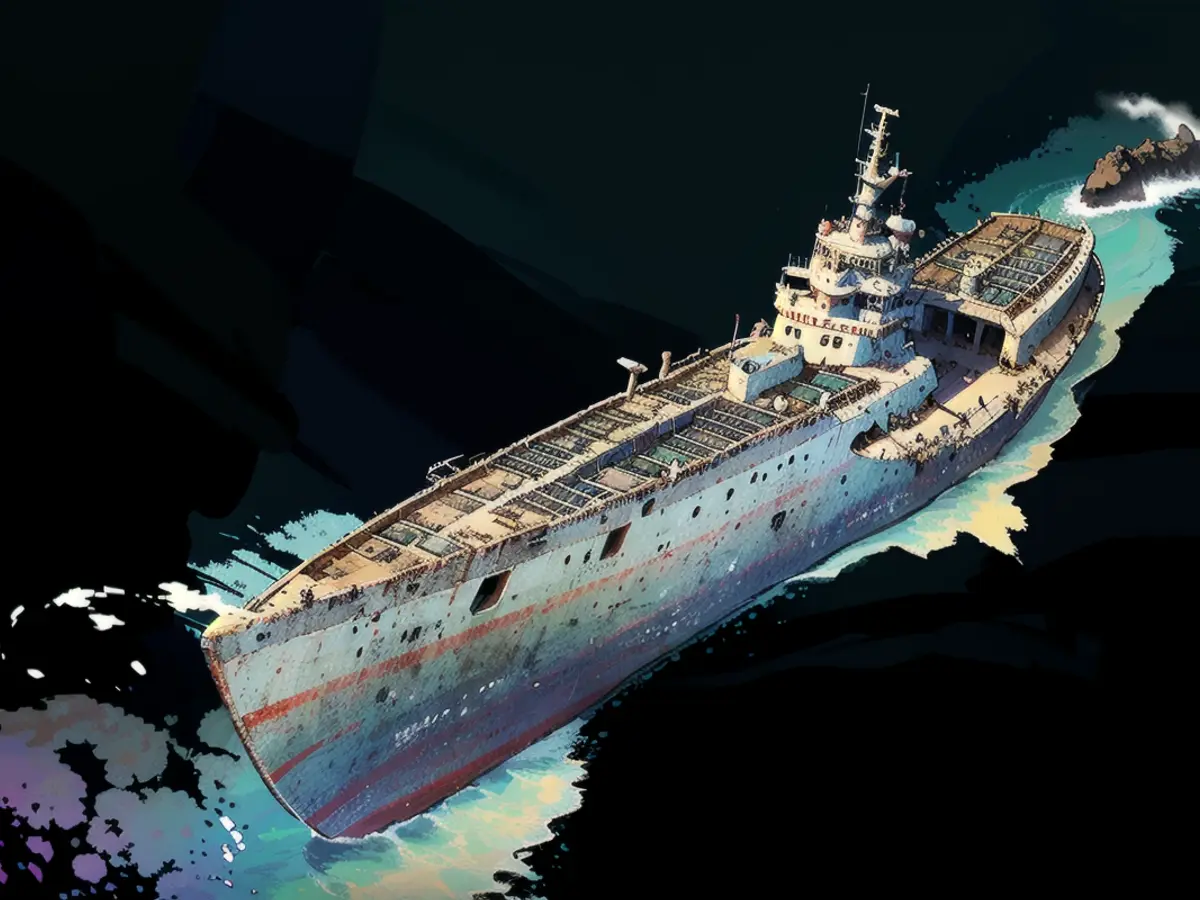Remains of iconic US Navy submarine USS Harder from World War II detected near Philippines
The submarine USS Harder rests under 3,000 feet (900 meters) of water near Luzon, a northern island in the Philippines, in an upright position with only minor damage near the conning tower from a Japanese depth charge. This information was shared in a press release by the Naval History and Heritage Command (NHHC).
The submarine's tragic end occurred on August 24, 1944, when it went down with all 79 crew members during its sixth wartime deployment as the US attempted to regain control of the Philippines from Japanese forces.
In the press release, NHHC Director and retired US Navy Admiral Samuel J. Cox emphasized that "victory has a price, as does freedom."
According to a report on the US Navy's history, Harder torpedoed two Japanese escort ships off the Bataan Peninsula on August 22, 1944, and then set out with two other subs to find more targets.
During a fight with a Japanese escort ship, CD-22, on the morning of August 24, Harder fired three torpedoes that missed and was later sunk by the ship's fifth depth charge attack, as mentioned in Japanese records cited by the NHHC.
The wreck was confirmed by data provided by the Lost 52 Project, an initiative led by Tim Taylor, CEO of Tiburon Subsea, to locate the 52 US subs that went down in World War II. The group has located at least six of these WWII submarines, the NHHC shared.
"We appreciate Lost 52 providing us the opportunity to further honor the bravery of the 'Hit 'em Harder' submarine's crew," said Cox in a statement.
The NHHC declared the submarine's wreck as "the final resting place of those who gave their lives defending our nation" and asked for respect from all parties regarding it as a war grave.
The Philippines was taken over by Japan shortly after the Japanese attack on Pearl Harbor in December 1941, and by the spring of 1942, US and Philippine forces surrendered to Japanese forces. Luzon was used by Japan to protect its supply routes from Southeast Asia and the East Indies.
By mid-1944, however, the US was regaining territories in the Pacific, and planned to reclaim the Philippines.
The "Hit 'em Harder" submarine was captained by Cmdr. Samuel Dealey, who was awarded the Medal of Honor posthumously for his actions during the vessel's fifth patrol. From March to July 1944, Harder destroyed three Japanese destroyers and possibly damaged or sunk two more in just four days, according to the National Medal of Honor Museum.
The museum's page detailing Dealey's actions recounted one particularly perilous encounter. As a Japanese destroyer charged at Harder, Dealey ordered a direct torpedo strike at the enemy's bow, known as a "down the throat" shot.
"At 1500 yards (457 meters), Dealey fired three torpedoes and ordered the sub to dive. As the Harder went beneath the destroyer, two of the torpedoes hit the ship, sending shockwaves through it."
On its first four patrols since its commissioning on December 2, 1942, Harder sank 14 Japanese ships and merchant vessels. Source

Read also:
- This will change in December
- Dikes withstand water masses so far - Scholz holds out the prospect of help
- Fireworks and parties ring in 2024 - turn of the year overshadowed by conflicts
- Attacks on ships in the Red Sea: shipping companies avoid important trade route
The US Navy's discovery of the USS Harder in Asia adds another significant chapter to the world's maritime history. The waters surrounding various Asian nations have witnessed numerous naval battles and submarine operations during World Wars.
Source: edition.cnn.com







